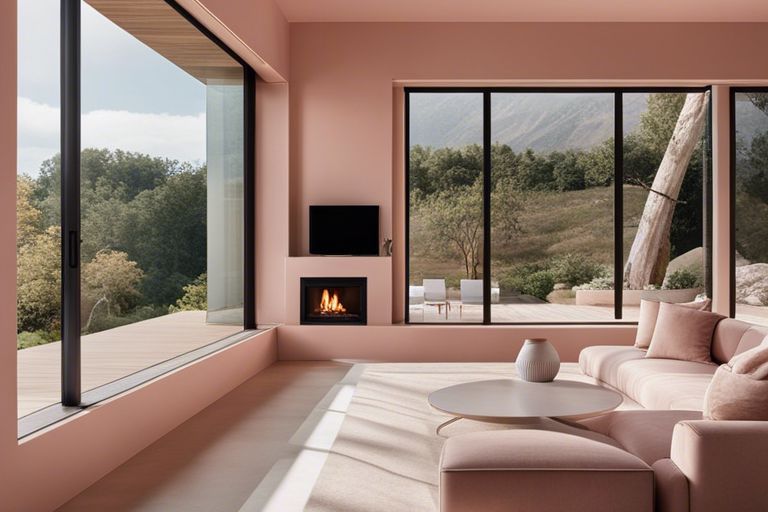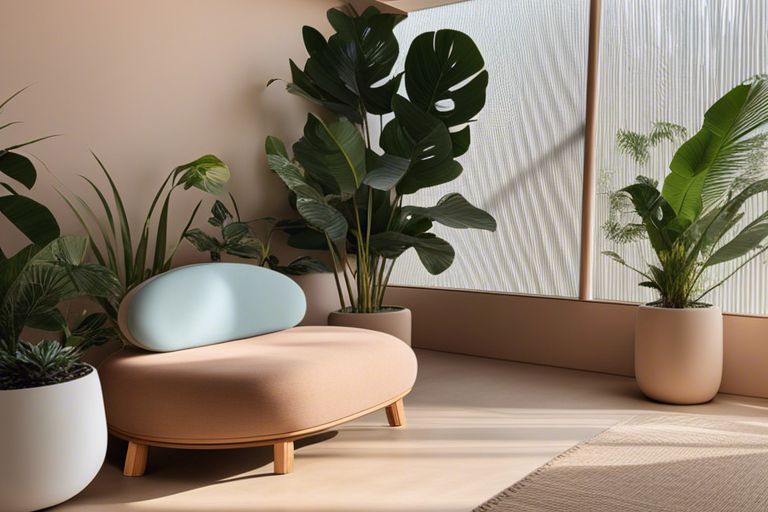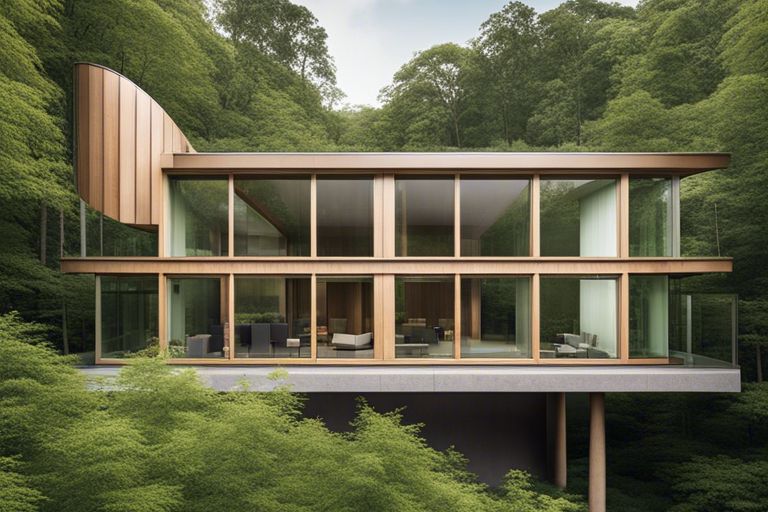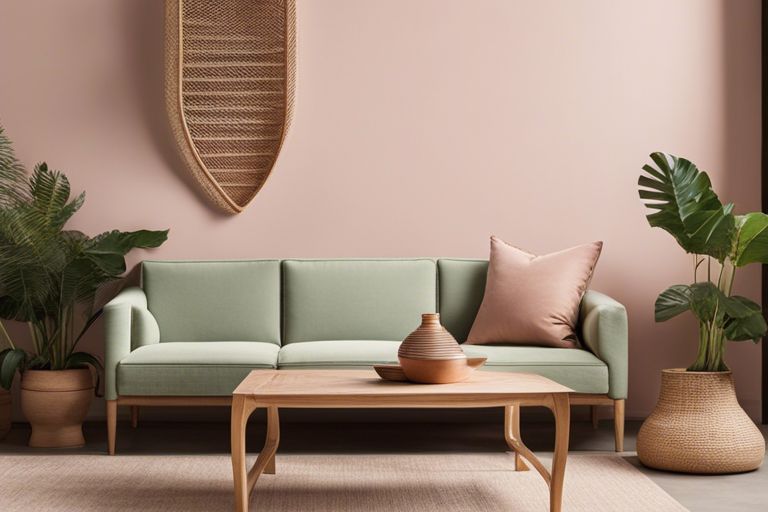Spaces are where you live, work, and play – and incorporating biophilic design can transform these areas into peaceful, rejuvenating havens. This comprehensive guide will show you how to seamlessly blend indoor and outdoor spaces to create a harmonious environment that enhances your well-being and connection to nature. From natural lighting to living walls, you’ll discover the key principles of biophilic design and practical tips to bring the outdoors in. Embrace the beauty of nature within your own spaces with this ultimate guide.
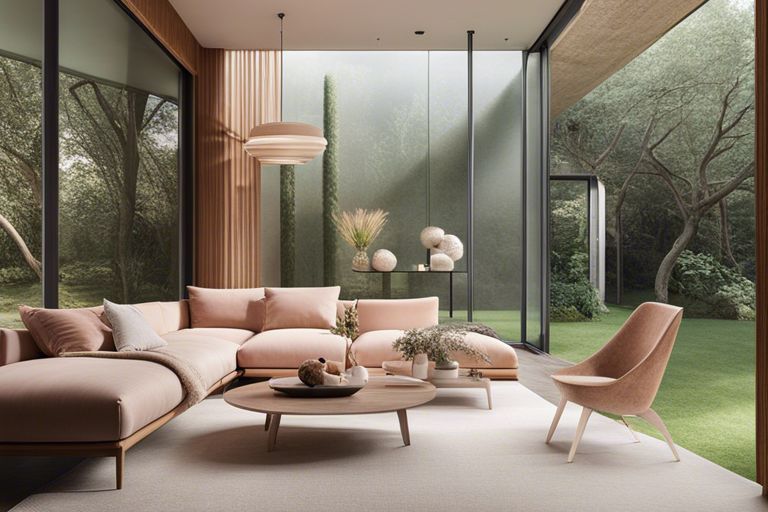
Key Takeaways:
- Biophilic design promotes well-being: Incorporating natural elements in indoor spaces such as plants, natural light, and views of nature can have a positive impact on our health and well-being.
- Connection to nature: Biophilic design emphasizes the connection between indoor and outdoor spaces, creating a seamless transition that promotes a sense of harmony and balance.
- Increased productivity and creativity: Studies have shown that biophilic design can lead to improved productivity, creativity, and overall satisfaction in indoor environments, making it a valuable approach for various settings such as homes, offices, and public spaces.
Understanding Biophilic Design
Definition and History of Biophilic Design
The concept of biophilic design centers around the idea of connecting human beings with nature in the built environment. Biophilic design aims to create spaces that mimic nature, fostering a sense of well-being, calmness, and productivity. The idea is not new; it traces back to early civilizations where people lived close to nature and sought to bring the outdoors inside their living spaces.
Principles and Benefits of Biophilic Design
While biophilic design may take various forms, it typically incorporates natural elements such as plants, water features, natural light, and views of nature. These elements help to reduce stress, improve cognitive function, and enhance overall well-being. Biophilic design principles include integrating natural materials, maximizing natural light, incorporating views of nature, and creating spaces for contemplation and reflection.
Biophilic design has been shown to have numerous benefits, including improved air quality, increased productivity, and better mental health outcomes. By incorporating elements of nature into your indoor spaces, you can create an environment that promotes health, happiness, and overall well-being.
Types of Biophilic Design
Some types of biophilic design focus on creating a seamless connection between indoor and outdoor spaces. This design approach incorporates elements of nature into built environments to create a more harmonious and biophilic living or working space. Recognizing the importance of incorporating nature into your surroundings can have a significant impact on your overall well-being.
| Visual Connections | Non-Visual Connections |
| Material Connections | Air Quality and Ventilation |
| Light and Space | Plants and Wildlife |
| Natural Colors and Textures | Water Features |
| Biophilic Patterns | Outdoor Views and Access |
Visual Connections
An vital aspect of biophilic design, visual connections involve incorporating natural elements such as views of greenery, natural light, and scenic outdoor landscapes into your indoor environment. By having visual access to nature, you can reduce stress, improve focus, and enhance your overall mood and productivity.
Non-Visual Connections
NonVisual connections in biophilic design focus on engaging your senses beyond vision, such as through auditory stimuli like the sound of running water or birds chirping, tactile experiences like touching natural materials, and olfactory sensations like the scent of flowers or fresh grass. For instance, incorporating a water feature in your workspace can help create a calming atmosphere and mask distracting noises, promoting a more peaceful and productive environment.
Material Connections
For material connections, biophilic design emphasizes the use of natural materials like wood, stone, bamboo, and cork in interior spaces. These materials not only evoke a sense of nature but also have tactile qualities that can create a more inviting and comfortable environment. By incorporating these natural elements into your living or working space, you can bring the benefits of nature indoors and enhance your overall well-being.
Air Quality and Ventilation
Biophilic design also considers air quality and ventilation as vital components of a healthy living or working environment. By introducing natural ventilation systems, such as windows that provide access to fresh outdoor air, and incorporating air-purifying plants, you can improve the air quality in your space. This not only has a positive impact on your physical health but also enhances your cognitive function and productivity.
Factors to Consider in Biophilic Design
Not all indoor spaces are created equal when it comes to incorporating biophilic design. There are several factors to consider in order to effectively connect indoor and outdoor spaces seamlessly. By paying attention to these key elements, you can create a more harmonious environment that promotes well-being and productivity.
Natural Light and Ventilation
To enhance the connection between indoor and outdoor spaces, you should prioritize maximizing natural light and ventilation in your design. Incorporating large windows, skylights, and open-air spaces can help bring the outdoors in and improve air quality. Natural light not only creates a sense of openness and spaciousness but also has numerous health benefits, including boosting your mood and increasing productivity.
Color Schemes and Materials
One of the key elements in biophilic design is the use of natural colors and materials to mimic outdoor environments. Earthy tones, soothing greens, and organic textures can help create a calming and rejuvenating space. By incorporating elements such as wood, stone, and plants, you can bring a sense of the outdoors inside and create a more nurturing environment.
Color schemes and materials play a crucial role in evoking the feeling of being connected to nature. They can help create a sense of tranquility and relaxation, making your indoor space a sanctuary from the stresses of everyday life.
Space Planning and Layout
Any biophilic design should take into account the space planning and layout to ensure a seamless flow between indoor and outdoor areas. Consider incorporating elements such as indoor gardens, green walls, and rooftop terraces to blur the boundaries between inside and outside. By creating spaces that encourage interaction with nature, you can improve your overall well-being and bring a sense of calm and serenity to your environment.
Factors such as circulation patterns, views to the outdoors, and access to natural elements should be carefully considered when designing your space. By prioritizing a layout that encourages a strong connection to nature, you can create a more harmonious and health-promoting environment.
Acoustics and Soundscaping
Soundscaping plays a significant role in biophilic design by incorporating natural sounds such as running water, rustling leaves, and birdsong into indoor spaces. By integrating elements like water features, wind chimes, and acoustic panels, you can create a more soothing and tranquil environment. The sound of nature can help mask distracting noises, reduce stress, and improve focus, creating a more peaceful and productive atmosphere.
Tips for Implementing Biophilic Design
For a successful implementation of biophilic design in your space, there are several key tips to keep in mind. By incorporating elements that mimic nature, you can create a more harmonious and healthy environment that promotes well-being and connectivity with the outdoors.
Incorporating Plants and Greenery
If you want to introduce more biophilic elements into your design, start by incorporating plants and greenery throughout your space. Plants not only add a sense of nature but also help improve air quality and reduce stress. Consider adding a variety of plant sizes and types to create a more dynamic and natural environment. Knowing how to care for the plants properly is key to their successful integration into your design.
Using Natural Materials and Textures
Clearly, integrating natural materials and textures into your space can help reinforce the connection to nature. Opt for materials like wood, stone, and bamboo to bring in earthly elements that evoke a sense of calm and grounding. These materials not only add warmth and texture but also have a sustainable appeal, making your design more environmentally friendly. Understanding how to properly incorporate these materials into your design can help create a more cohesive and natural aesthetic.
Maximizing Natural Light and Views
Greenery, maximizing natural light and views can help enhance the connection to nature in your space. By bringing in more natural light, you can create a brighter and more inviting atmosphere that mimics the outdoors. Plus, having views of nature can help reduce stress and improve productivity, making your space more pleasant and enjoyable to be in.
Creating Connection to Nature through Art and Accessories
Any space can benefit from incorporating nature-inspired art and accessories that evoke a sense of the outdoors. By adding landscape paintings, botanical prints, or nature-themed sculptures, you can create a sensory experience that connects you to the natural world. Another way to bring nature indoors is by integrating elements like natural fibers, organic shapes, and textures inspired by the outdoors into your decor.
Step-by-Step Guide to Biophilic Design
Despite the growing popularity of biophilic design, many are unsure of where to start when implementing it in their spaces. If you’re looking for a comprehensive guide to help you seamlessly connect indoor and outdoor spaces through biophilic design, check out The Ultimate Guide to Biophilic Interior Design. This step-by-step approach will assist you in transforming your environment into a harmonious and nature-inspired oasis.
Assessing Your Space and Needs
| Biophilic | Your Space and Needs |
| Examine your current space, | Determine how much natural light enters your space |
| Evaluate the existing connection to nature | Identify areas that lack nature elements |
Setting Design Goals and Objectives
| Needs | Setting Design Goals and Objectives |
| Understand your personal preferences | Establish specific biophilic design goals |
| Consider the functions of the space | Set objectives to enhance the overall well-being |
Objectives: By clearly defining your goals and objectives, you can create a roadmap for your biophilic design project. Whether it’s improving air quality, increasing natural light, or fostering a sense of tranquility, outlining your objectives will help you stay focused throughout the process.
Selecting Materials and Finishes
Finishes: Selecting the right materials and finishes is crucial in biophilic design. Opt for sustainable materials like bamboo, cork, or reclaimed wood to enhance the connection to nature. Incorporating textures and patterns inspired by the natural world can further create a sense of biophilia in your space. For instance, using stone or water elements can evoke a feeling of calmness and serenity.
Implementing Design Elements and Features
An integral part of biophilic design is the incorporation of nature-inspired elements and features. Whether it’s installing living plant walls, creating indoor gardens, or incorporating natural colors and patterns, these design elements can significantly enhance your connection to nature indoors. It’s important to strike a balance between these elements to create a space that is not only visually appealing but also promotes a sense of well-being and harmony.
Pros and Cons of Biophilic Design
All Advantages of Biophilic Design
Advantages of Biophilic Design
You may be wondering why biophilic design is gaining popularity in the world of architecture and interior design. Well, there are several advantages to incorporating nature into your living and working spaces.
Firstly, biophilic design has been proven to reduce stress, lower blood pressure, and improve overall well-being. Being surrounded by elements of nature indoors can have a calming effect on your mind and body, leading to increased productivity and creativity.
All Challenges and Limitations of Biophilic Design
Challenges and Limitations of Biophilic Design
Cons
While biophilic design offers numerous benefits, there are also some challenges and limitations to consider. One of the main obstacles is the upfront cost associated with implementing these design elements. From living walls to large windows, incorporating nature into your space can be expensive.
Another Overcoming Common Obstacles and Concerns
Overcoming Common Obstacles and Concerns
There’s no denying that the cost and maintenance requirements of biophilic design can be daunting. However, there are ways to overcome these common obstacles and concerns. One solution is to start small by introducing potted plants or natural materials into your space before committing to larger biophilic design elements.
Pros
Conclusion
As a reminder, incorporating biophilic design principles in your indoor and outdoor spaces can have numerous benefits for your well-being. By fostering a connection with nature through elements such as natural light, greenery, and views of the outdoors, you can create environments that promote relaxation, creativity, and overall health.
Do not forget, biophilic design is all about bringing the outdoors in and creating spaces that mimic natural environments. So whether you’re designing a home, office, or public space, consider incorporating biophilic elements to enhance your overall experience and connection with nature.
FAQ
Q: What is biophilic design?
A: Biophilic design is an innovative approach that incorporates nature and natural elements into the design of indoor and outdoor spaces. This design principle seeks to create environments that support human health and well-being by fostering a connection with nature.
Q: What are the benefits of biophilic design?
A: Biophilic design has numerous benefits, including stress reduction, improved cognitive function, increased productivity, and enhanced overall well-being. By bringing elements of nature into living and working spaces, individuals can experience a greater sense of calm and connection with the environment.
Q: How can I incorporate biophilic design into my home or workspace?
A: There are various ways to incorporate biophilic design into your home or workspace, such as using natural materials like wood and stone, maximizing natural light, adding plants and greenery, incorporating views of nature, and creating outdoor living spaces. By integrating these elements, you can create a more harmonious and biophilic environment that supports your health and happiness.
